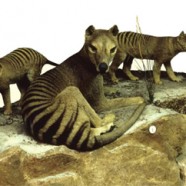Robin des Bois will Pursue them via “On the Trail”
Today, Robin des Bois, the Paris based NGO, released the 1st edition of “On the Trail”, a quarterly information and analysis bulletin on poaching and smuggling of endangered animals.
206 events of poaching, seizures, arrests and convictions which occurred in Africa, Australia, America, Europe and Asia are listed. This panoramic vision of cruelty and criminal acts on wildlife, between April 1 and June 30, 2013 makes one shiver and deliberate.
In three months the equivalent of 707 elephants, in tusks, were seized. Poaching of Mali elephants is increasing. Robin des Bois recently wrote to the Secretary-General of the United Nations, requesting that UN peacekeeping troops be given strict instructions to protect the subsisting elephant population.
Ivory: A very disturbing premiere !
Whatever the motivations of the ivory thief at the Museum of Natural History in Paris are, this heist is to be taken seriously. Is it a personal initiative, an order, or the emergence of a new underground ivory trafficking network in France and Europe?
Since 2011, 82 rhinoceros horns were stolen in Europe, including 7 in France. These thefts are attributed to organized criminal networks. They target museums, antique dealers, auction rooms, taxidermists, and private collectors. These thefts are sometimes accompanied by violence. In zoos, rhinos are under increased protection. The development of thefts is parallel to the increase of poaching in Africa and Asia and the increased price per kilo of the rhinoceros horn on the legal and black markets. Some experts suggest the price goes up to 65,000 euros per kilo.
CITES has no cure for elephant poaching
Compromise and Rhetoric is killing world’s elephants
Despite the praise for the Convention on International Trade in Endangered Species of Wild Fauna and Flora on its 40th anniversary, CITES has failed to protect the elephant. African elephant populations are under siege and in decline primarily to satiate the demand for ivory in Asia. In 2011 alone, around 25,000 elephants or more were slaughtered for their ivory and the killing was even worse in 2012.
Enough is enough. Several conservation and animal welfare organizations, including the David Shepherd Wildlife Foundation (DSWF-United Kingdom), Elephant Advocacy League (United States), Environmental Investigation Agency (EIA-United Kingdom), Fondation Franz Weber (FFW-Switzerland), International Ranger Federation (Australia), Last Great Ape Organization (LAGA-Cameroon), Pro Wildlife (Germany), Robin des Bois (France), Youth for Conservation (Kenya) attending the 16th meeting of the CITES Conference of the Parties are outraged by the failure of CITES to stop the poaching of African elephants, particularly African elephants. Instead of demanding an end to the markets driving the slaughter, CITES Parties are coming up with weak compromises in a feeble attempt to stop the poaching. But China, the single country most responsible for the crisis due to its burgeoning ivory market, won’t even concede its responsibility as the main problem. Nor will CITES admit that previous decisions allowing “legal” sale of ivory to China and Japan have stimulated, not reduced, demand and directly contributed to the poaching.
Would you please revive the species?
CITES – Bangkok
Press Release # 8
Animal species are extinguished. The plenary of CITES (Convention on International Trade in Endangered Species of Wild Fauna and Flora) in Bangkok was the opportunity to bury, without ceremony, the Thylacinus cynocephalus and some other species wiped off the planet in the past century. Their family trees date back several million years. Extinctions are accelerating.
These biological disasters are not caused by any disruptions in climate, geological mutations or functional inadequacies. Mankind is the conductor of these disasters, wreaking havoc through risky manipulations or introductions and through radical exploitation of its surroundings.
The Capitalism of Extinction
Convention on International Trade in Endangered Species of Wild Fauna and Flora
CITES 2013 – Bangkok, 6 pm (local time)
Press Release No. 7
Making money from the extinction of species could become an industry of the future. It has certainly been developed by CITES – Convention on International Trade in Endangered Species of Wild Fauna and Flora.
Looking at the re-opening of international ivory trade, CITES has published à call of tender for an “independent study”. It has been attributed to specialized consultants from southern Africa. Among the 5 authors, Rowan Martin, director of research on wild fauna in Zimbawe, and Debbie A. Peake, one of the best taxidermists of Botswana, are also present. The main recommendation of the study co-financed by the European Union is to create CISO (Central Ivory Selling Organization), a single office for ivory sales. CISO would be modeled after the Diamond Trading Company (DTC), this De Beers Company has lasted over 100 years. One director, named by the main producing states, regulates trade to recognized and accredited governments or private processing companies. Short routes reduce the risks of mixing in illegal ivory. Inter-African sales would be prohibited. The report proposes that it would be possible to collect 8 tons of ivory each year for every 10,000 elephants killed by slaughter, hunting, or natural causes. The authors highlight that this management of ivory would be possible only in the absence of civil disorder and arms conflicts in producing countries. Within the report, ivory is an ore distanced from all biological, ethical and cultural considerations.










